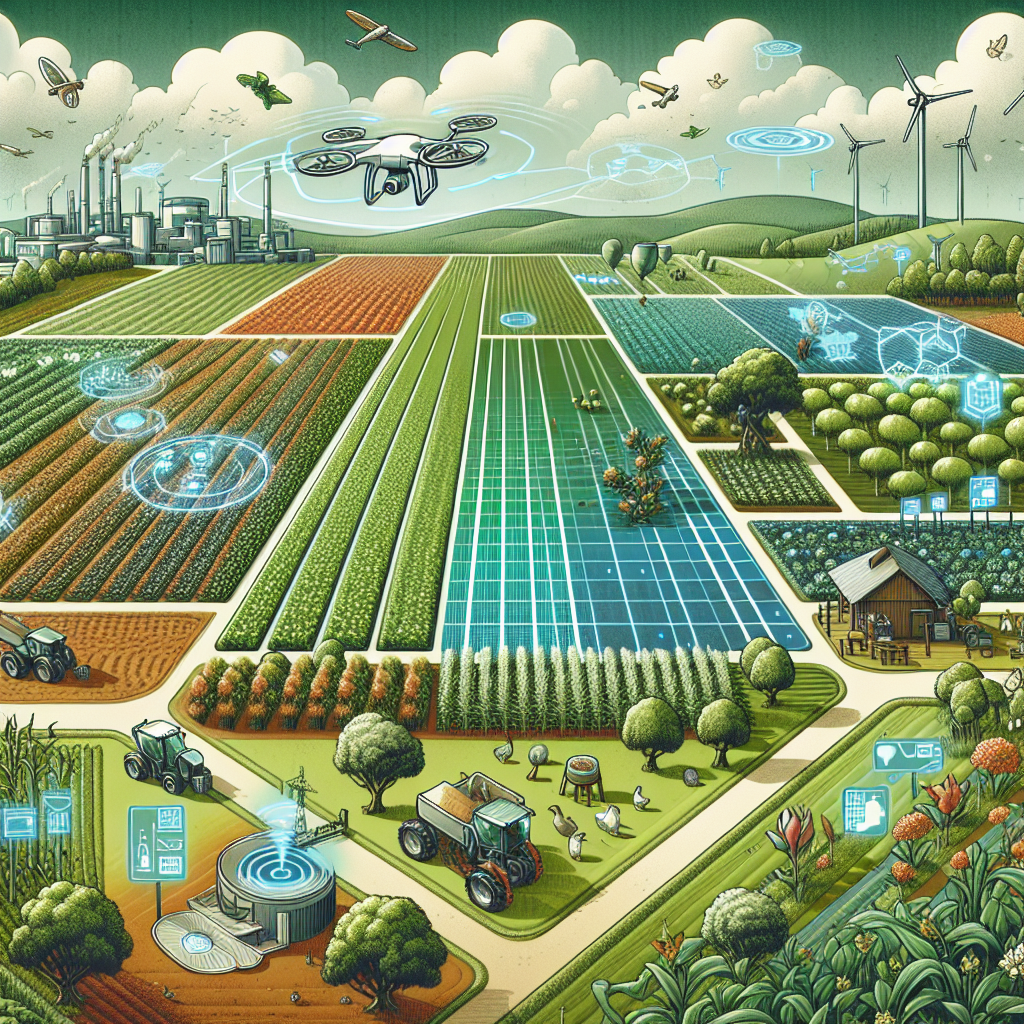Agricultural biodiversity conservation is a critical issue that affects the health of ecosystems and the sustainability of our food systems. With the increasing threats to biodiversity from climate change, habitat destruction, and other human activities, there is a growing need for innovative solutions to protect and preserve the genetic diversity of our crops and livestock.
One of the most promising technologies for addressing the challenges of agricultural biodiversity conservation is artificial intelligence (AI). AI has the potential to revolutionize the way we monitor, manage, and conserve biodiversity in agricultural landscapes. In this article, we will explore some of the key applications of AI for agricultural biodiversity conservation and discuss how this technology can help us address the pressing issues facing our food systems.
Applications of AI for Agricultural Biodiversity Conservation
1. Monitoring and Mapping Biodiversity: AI can be used to analyze satellite imagery and other remote sensing data to monitor changes in biodiversity over time. By using machine learning algorithms, researchers can identify and map different species and habitats, helping to track the distribution and abundance of key biodiversity indicators. This information can be used to inform conservation efforts and identify areas that are in need of protection.
2. Predicting Species Distribution: AI models can be trained to predict the distribution of species based on environmental variables such as temperature, precipitation, and land use. By analyzing large datasets of species occurrence records and environmental data, researchers can develop models that can predict where different species are likely to be found. This information can help conservationists target their efforts more effectively and prioritize areas for protection.
3. Genetic Analysis: AI can also be used to analyze genetic data to understand the genetic diversity of crops and livestock. By using machine learning algorithms, researchers can identify genetic markers that are associated with desirable traits, such as disease resistance or drought tolerance. This information can be used to develop new varieties of crops and livestock that are more resilient to environmental stresses and can help to conserve genetic diversity in agricultural systems.
4. Pest and Disease Management: AI can be used to develop predictive models for pest and disease outbreaks in agricultural systems. By analyzing environmental data and historical records of pest and disease incidence, researchers can develop models that can predict when and where outbreaks are likely to occur. This information can help farmers take proactive measures to prevent outbreaks and reduce the need for chemical pesticides, promoting biodiversity conservation in agricultural landscapes.
5. Precision Agriculture: AI can also be used to optimize agricultural practices to minimize environmental impacts and promote biodiversity conservation. By using sensors, drones, and other technologies to collect data on soil health, crop health, and weather conditions, farmers can use AI algorithms to make real-time decisions about planting, irrigation, and pest control. This can help to reduce the use of chemical inputs, conserve water resources, and promote biodiversity in agricultural landscapes.
FAQs
Q: How can AI help farmers conserve agricultural biodiversity?
A: AI can help farmers conserve agricultural biodiversity by providing them with tools and technologies to monitor and manage biodiversity in their landscapes. By using AI algorithms to analyze data on species distribution, genetic diversity, and environmental conditions, farmers can make informed decisions about conservation practices and prioritize areas for protection.
Q: What are some of the challenges of using AI for agricultural biodiversity conservation?
A: Some of the challenges of using AI for agricultural biodiversity conservation include the need for large amounts of high-quality data, the complexity of modeling biological systems, and the potential for biases in AI algorithms. Researchers and practitioners working in this field must be aware of these challenges and work to address them through rigorous data collection, model validation, and transparency in decision-making.
Q: How can farmers and policymakers support the use of AI for agricultural biodiversity conservation?
A: Farmers and policymakers can support the use of AI for agricultural biodiversity conservation by investing in research and development, promoting data sharing and collaboration, and adopting policies that incentivize sustainable agricultural practices. By working together to harness the potential of AI for biodiversity conservation, we can create more resilient and sustainable food systems for future generations.
In conclusion, AI has the potential to revolutionize the way we monitor, manage, and conserve agricultural biodiversity. By leveraging the power of machine learning algorithms and big data analytics, researchers and practitioners can develop innovative solutions to address the pressing issues facing our food systems. By investing in AI technologies and promoting collaboration among stakeholders, we can create a more sustainable and biodiverse agricultural landscape for future generations.

